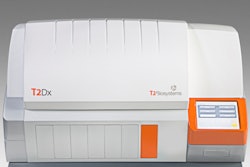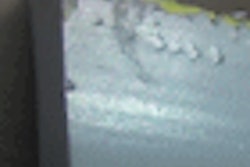TORONTO - Filmcards used in setting up radiation therapy procedures are a source of cross-infection in hospitals, and organisms such as Staphylococcus aureus are present on the filmcards, according to a study presented at the International Society of Radiographers and Radiological Technologists (ISRRT) annual meeting.
Infection controls have to be implemented in radiology departments because of the potential for cross-contamination, noted Katherine Jensen, a radiation therapist at the Tom Baker Cancer Centre in Calgary in Alberta, Canada.
"We asked ourselves with these cards, if they could be a cross-infection tool that we are using without knowing," said Jensen, one of the study's investigators. "Our hypothesis was that filmcards used by radiation technologists are a potential source of cross infection. They do, in fact, harbor bacteria."
The conventional thinking about filmcards is that they are not a source of cross-infection because they are composed of a double-emulsion film made up of silver halide granules, suspended in a gelatin matrix, and the emulsion acts as a protectant against bacteria, according to Jensen.
The filmcards are used as a setup aid when external-beam radiation is being administered, Jensen said. The practice at the Tom Baker Cancer Centre, an outpatient facility, had been to reuse the filmcards throughout a workday on multiple patients at multiple body sites, a practice that could create the potential for cross-contamination, added Jensen.
The researchers collected 30 used filmcards from radiation therapists and compared them to 30 unused filmcards, with the latter cards serving as controls. They took clinical isolates including Escherichia coli, Pseudomonas aeruginosa, Enterobacter aerogenes, Staphylococcus aureus, Klebsiella oxytoca, Enterococcus faecium, Enterococcus faecialis, and methicillin-sensitive Staphylococcus aureus (MSSA).
Jensen noted that the strains are common environmental contaminants and likely to be found on common hospital environments such as sinks, stethoscopes, or door handles.
The researchers found overall that 17 (58%) of 29 used filmcards tested positive for pathogenic bacteria, while six (20%) of 30 unused cards tested positive, a difference that was statistically significant (p = 0.003). Jensen described it as "interesting" that even unused cards carried bacteria.
"Even though the cards have not been used, we still found bacteria on the cards that were stored and supposedly clean," Jensen said in an interview.
The most prevalent bacteria was S. Aureus, with 11 (38%) of 29 used filmcards testing positive for the bacteria, while two (6.7%) of 30 control cards tested positive, a difference that was statistically significant (p = 0.005).
Jensen noted that the prevalence of S. Aureus was higher in filmcards compared to the prevalence rate of S. Aureus in stethoscopes, which, according to the literature, ranges from 4.2% to 27.5%.
Entero bacteria tested positive on two of 29 used filmcards compared to none of the control filmcards, and skin flora was found on eight (27.6%) of 29 used filmcards compared to five (16.7%) of 30 control filmcards. Strep bacteria tested positive on two (6.9%) of 29 used filmcards compared to none of the control filmcards.
"They [filmcards] do, in fact, harbor bacteria," says Jensen. "If you have used it once, you can't clean the card because of the emulsion [that coats it]. The filmcards can collect bacteria that can be transferred anywhere else."
Some used filmcards had more than five colonies of bacteria surviving, which Jensen attributed to how often the filmcards were used before they were discarded. Instead of being discarded after use, used filmcards had been placed on countertops, put in lab coat pockets, or touched by ungloved hands, Jensen said.
"We now have a specific infection control policy set for them," said Jensen. "We have adopted and recommend a one-use policy. Use it once and discard it."
In a separate experiment, Jensen and investigators attempted to grow methicillin-resistant Staphylococcus aureus (MRSA) on eight filmcards. The cards were swabbed with MRSA, and a reference strain of MRSA (38591) was used in the MRSA survival assay along with MSSA isolate (pure form).
Jensen and other investigators monitored the filmcards for 21 days and observed that MRSA was able to survive for a three-week period.



















